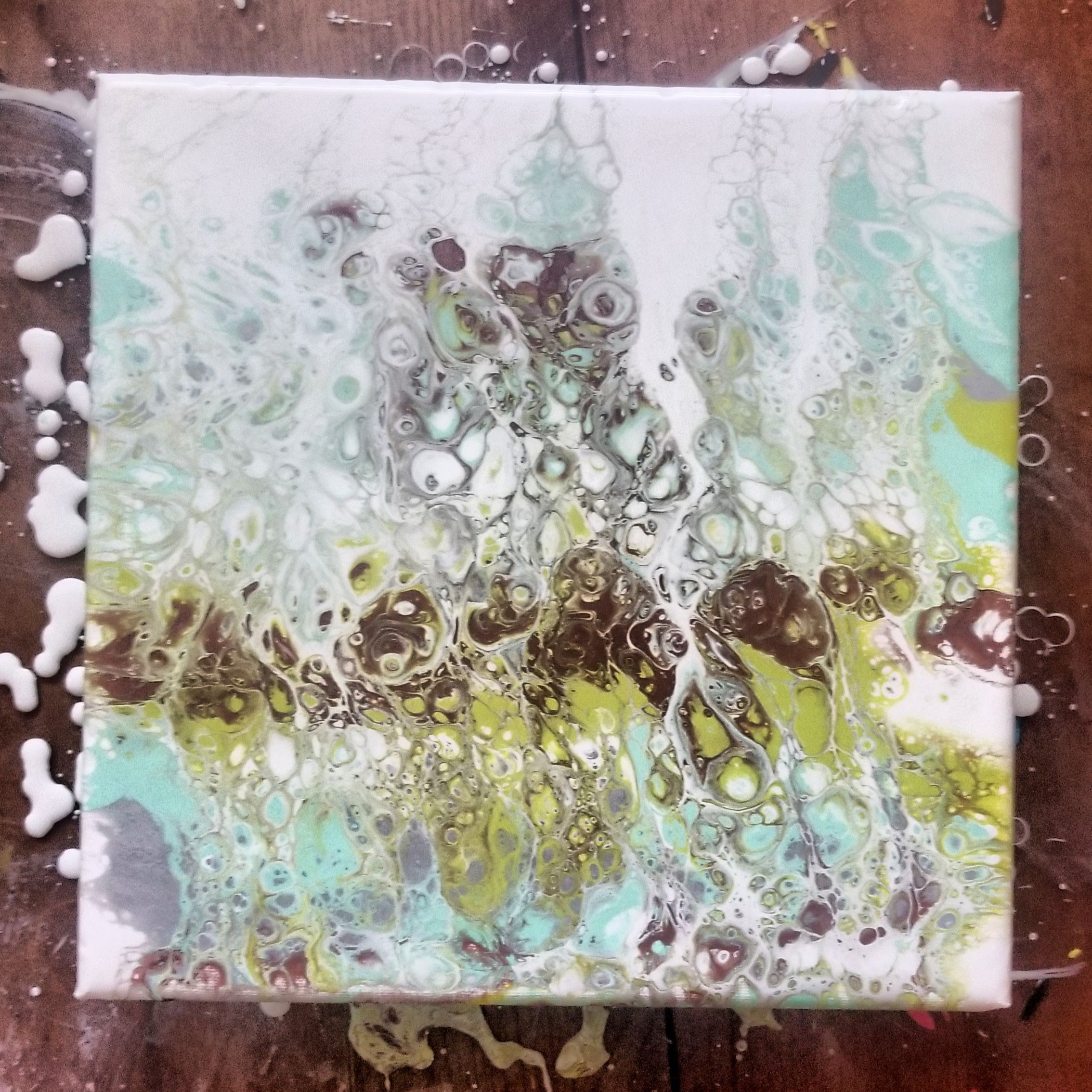Discovering Fluid Painting
My husband has been out of town for work, and I’ve been feeling a lot of experimental creative energy. All of the work I do on screens leaves me hungry for a more tactile creative experience. I’ve been dabbling in painting lately, but I’ve never had much of a propensity for figurative artwork without the aid of technology. The other day, I started searching YouTube for painting techniques that resulted in forms that looked like the result of chemical processes rather than human intervention.
I quickly stumbled upon Myriam’s Nature, a fantastic YouTube channel containing a wealth of tutorials on fluid acrylic, alcohol ink, and resin techniques. While her aesthetic is not quite aligned with my own, I love Myriam’s soothing voice, goofy humor, and emphasis on the economical and accessible nature of these painting techniques. Long story short, this was a lightning-strike of inspiration, and I was quickly off to the hardware store to get some supplies. Here’s one of the first videos I viewed:
The technique of fluid painting lies largely in the mixing of paint, a pouring medium (Floetrol, a latex paint additive to improve flow available at big-box hardware stores, is a favorite inexpensive option), water, and sometimes a drop or two of silicone or dimethicone lubricant. The different combinations and proportions of these elements result in endless recipes that yield different results. These options are multiplied by different methods of pouring the paint onto one’s substrate of choice (‘dirty pour,’ ‘swipe,’ ‘Dutch pour,’ ‘ring pour’). Though I’ve since discovered that they are only the tip of the fluid painting iceberg, most beginners pursue all of this complicated paint mixing and messy pouring in the pursuit of ‘cells’—the clusters of circular patterns that bubble up through the paint and are stretched as one tilts the canvas.
Anyway, I’m sure I’ll be posting much more on this in the future. I’m very excited about the aleatoric and improvisational nature of this kind of work, and I’m looking forward to finding interesting ways to harness the chaos and put my own spin on the technique.
Here are some of my first attempts:





